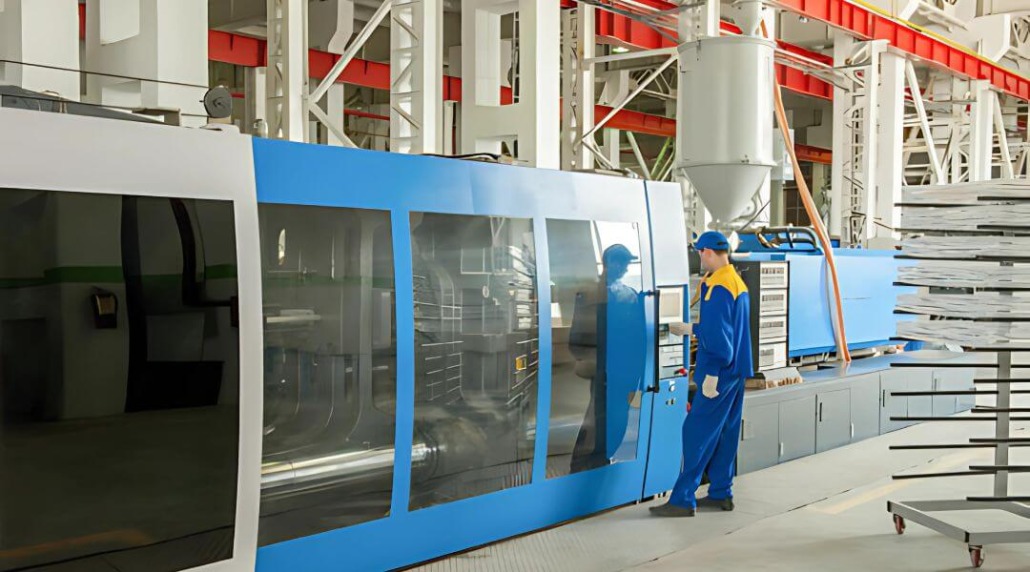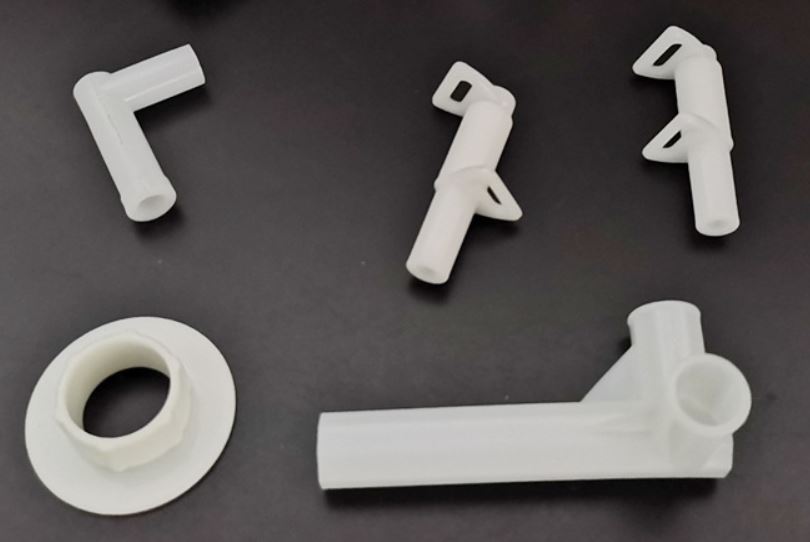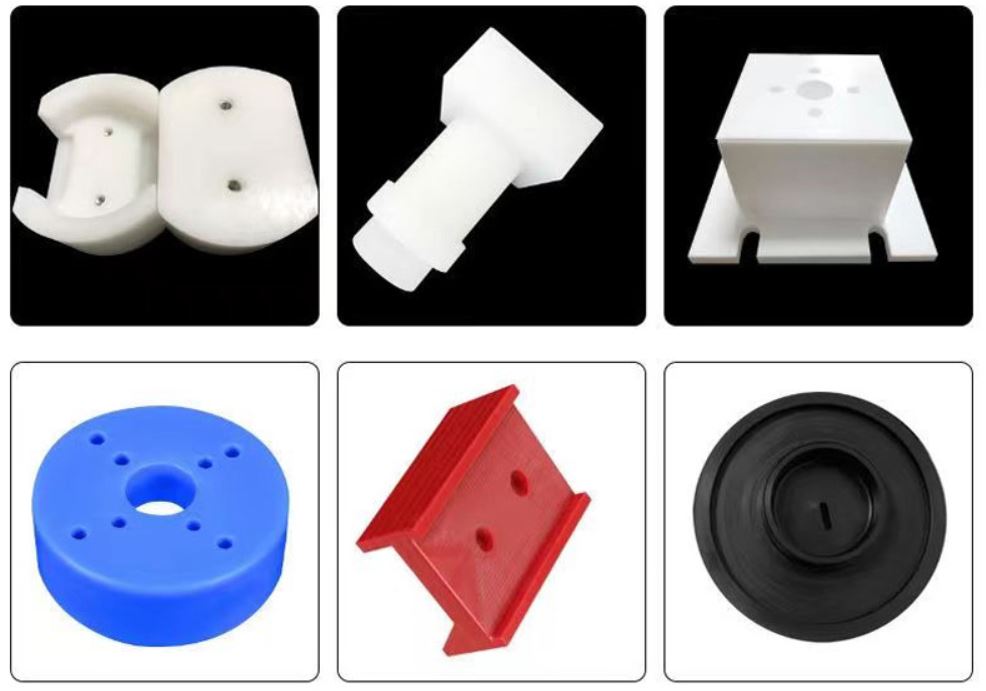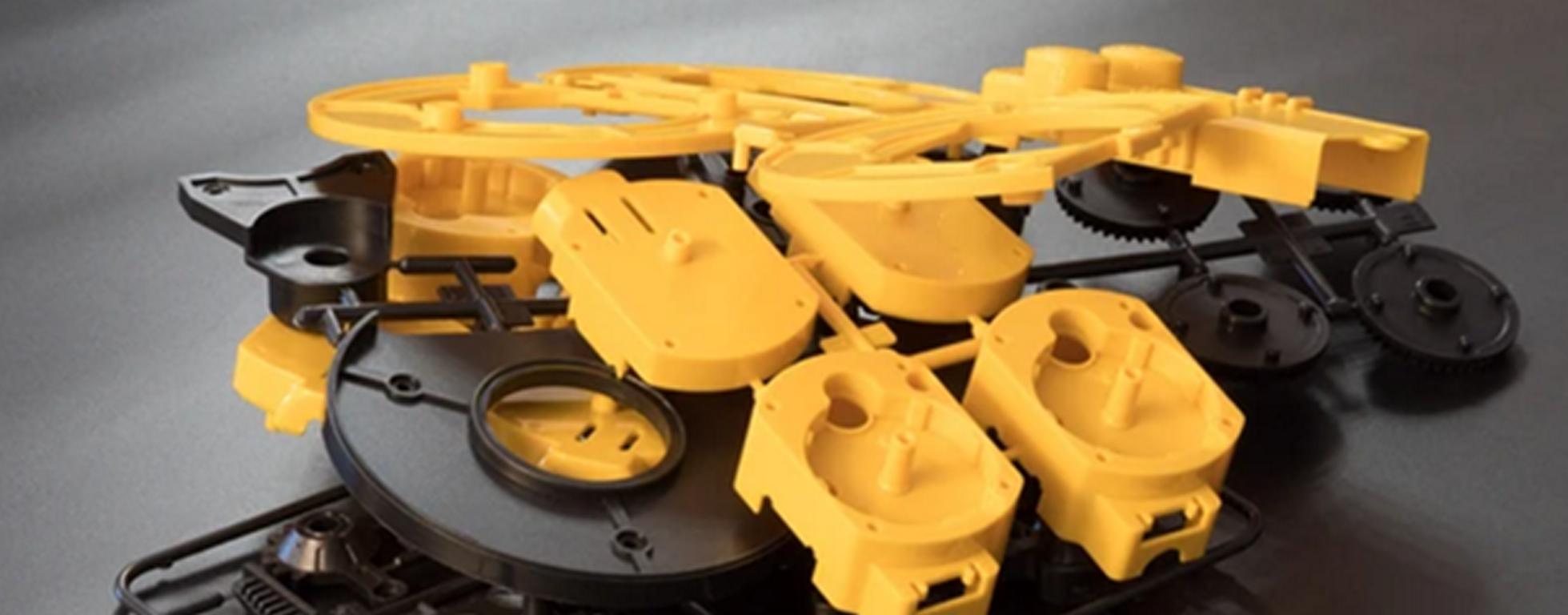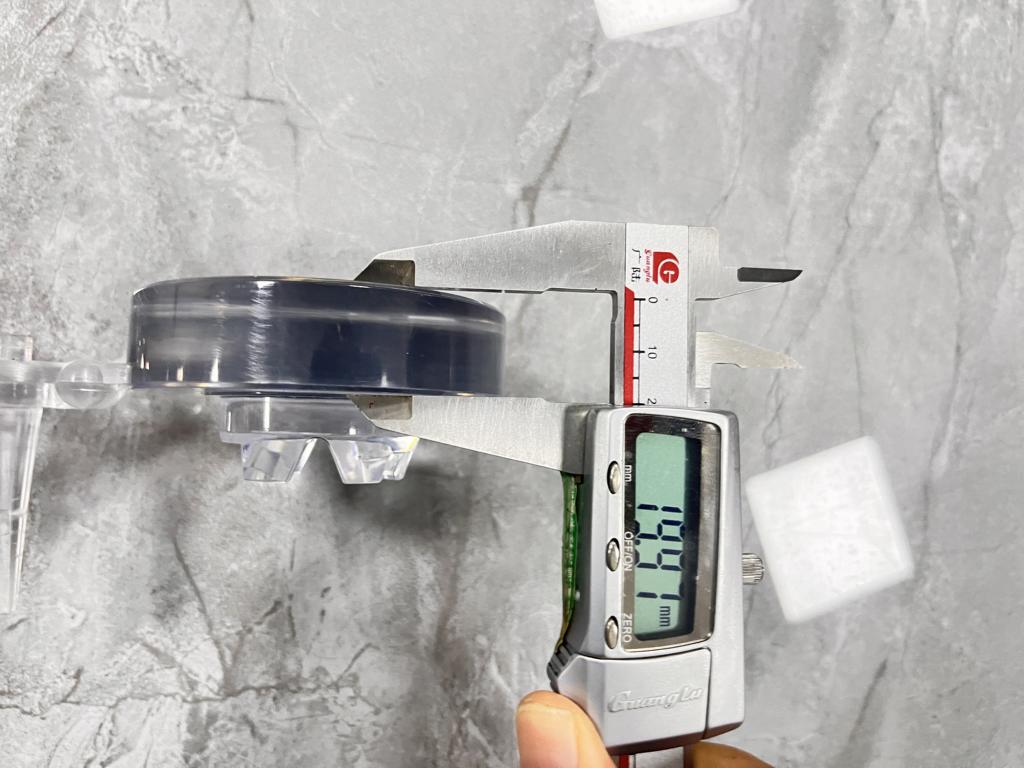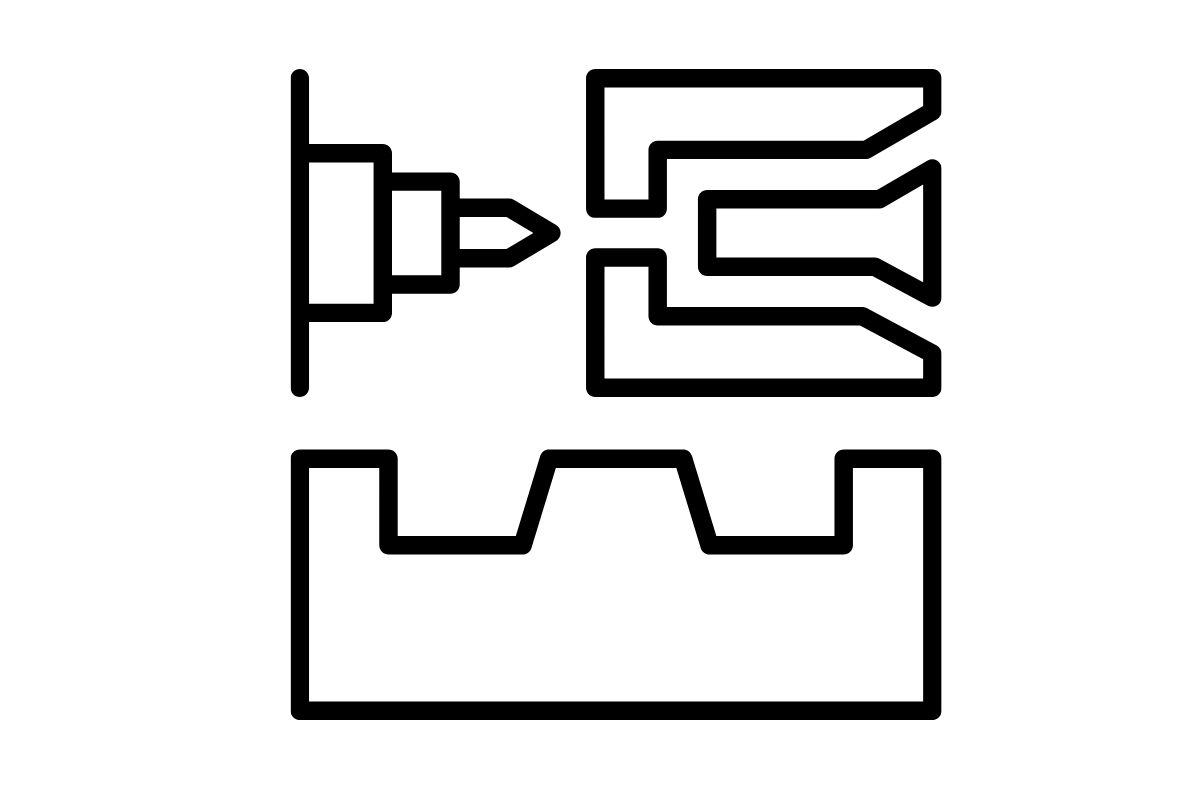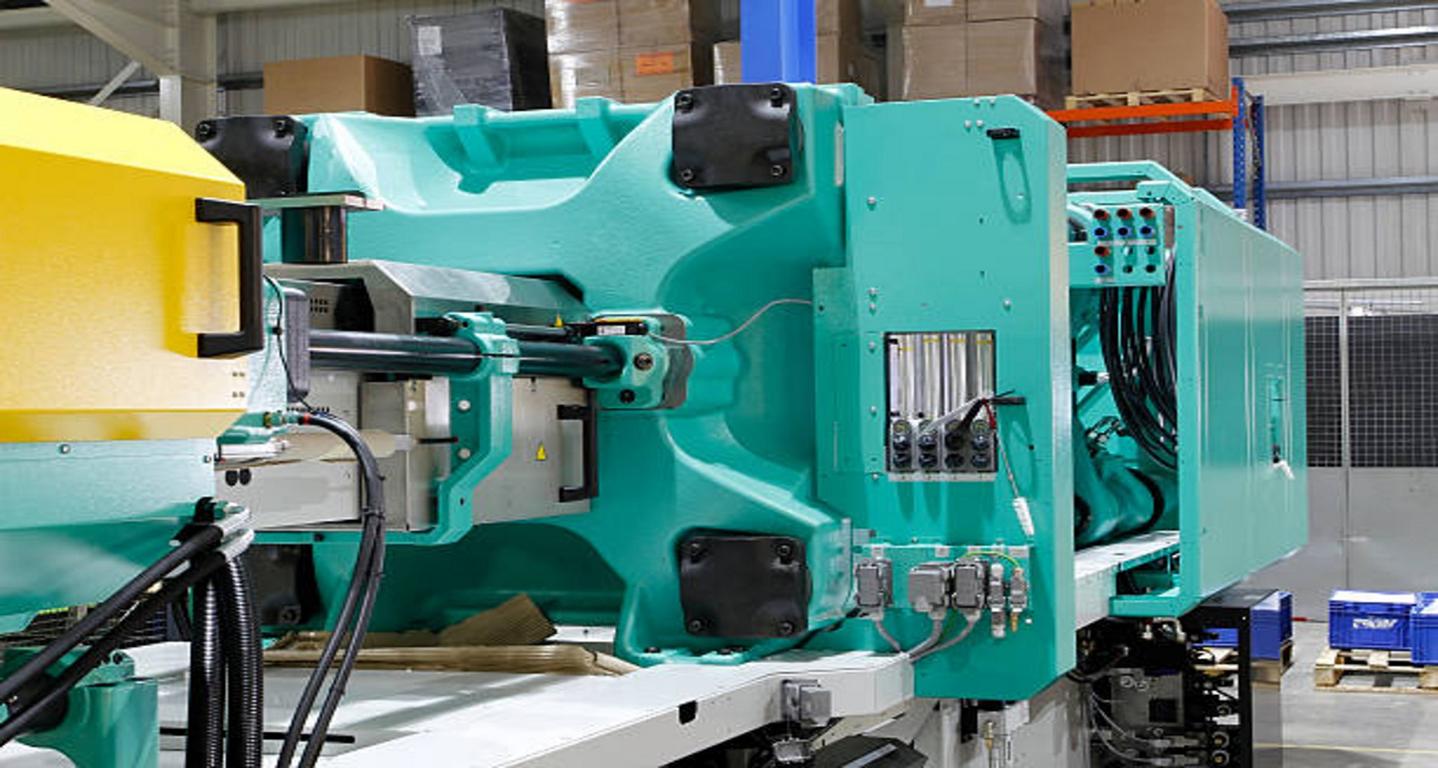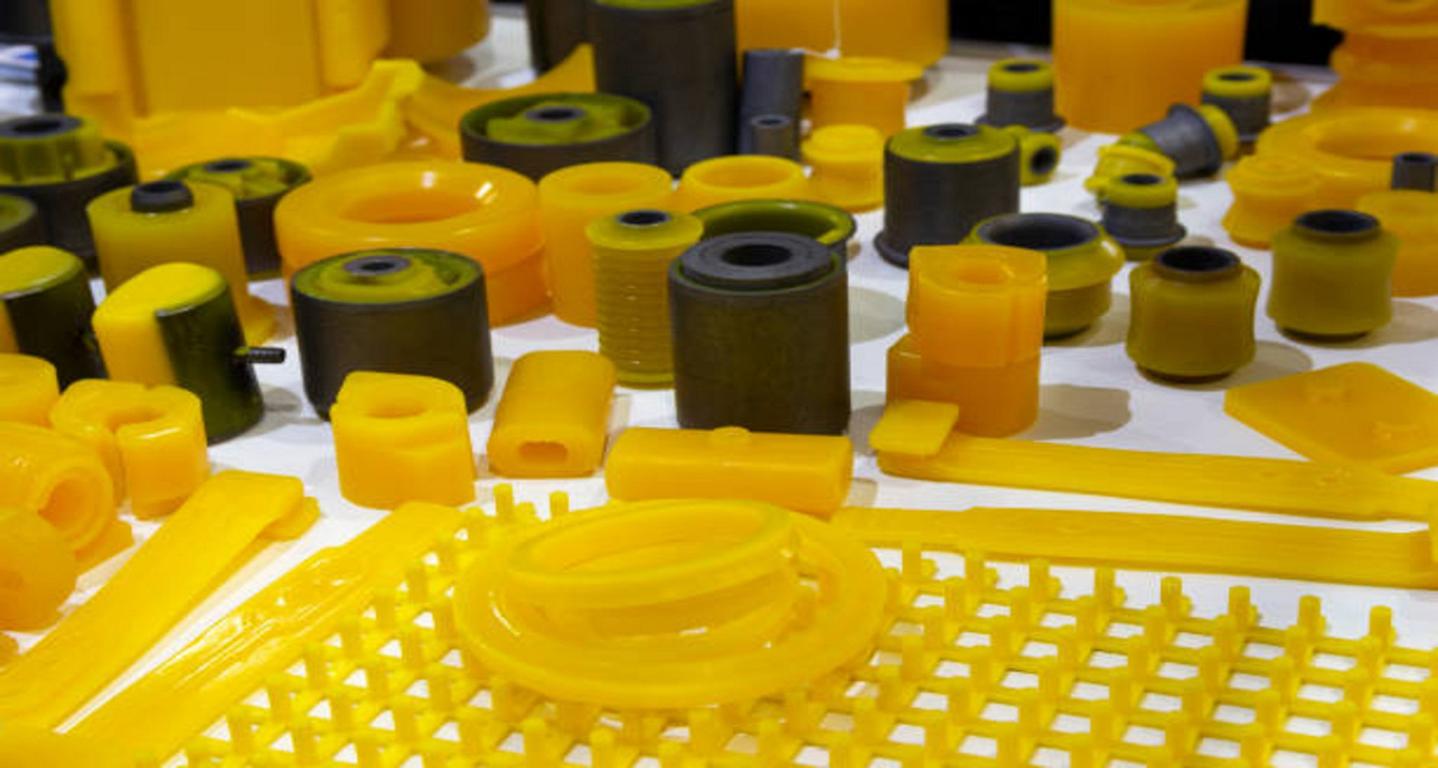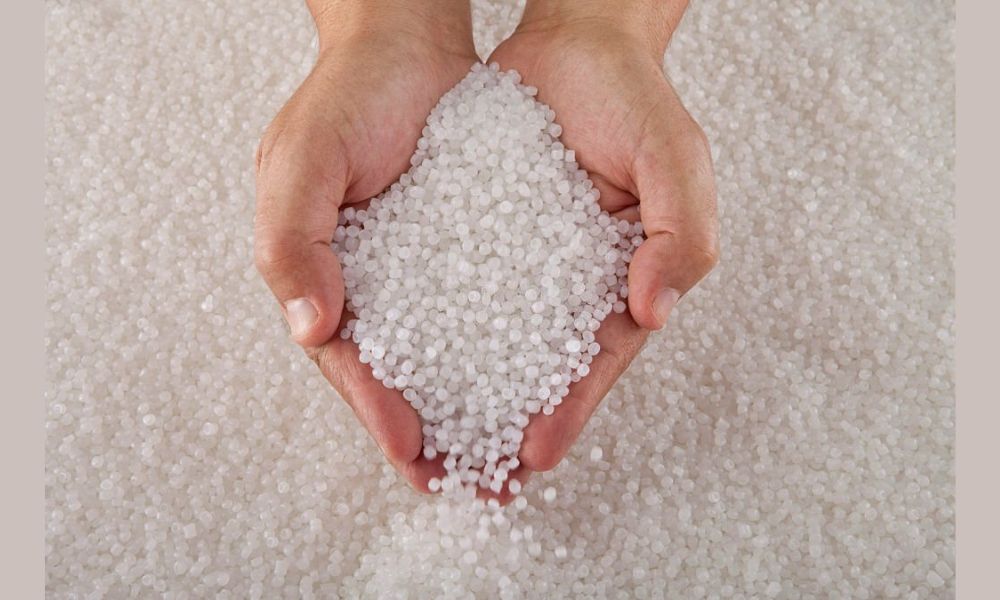China and the USA are the two major countries that are identified in the Servicios de moldeo por inyección de plástico. Two countries have some of the world’s most proficient and efficient empresas de moldeo por inyección de plástico catering to the automotive, electronics, medical, and other industries. Sundry services produce complex and thin parts and sub-assemblies, mainly in thermoplastic, elastomer, and thermoset polymers. They use technology to understand how to meet market needs while offering cheap solutions.
So, the demand for better definitions and time factors has dramatically advanced these two countries’ plastic injection molding industries. The Chinese sector naturally relies on these competencies to supply affordable, acceptable-quality products backed by a vibrant production platform in China. On the same note, the USA is now recognized for business advancements, accountability for the supply chain, and exceptional compliance. With the right machinery and human resources, the two countries have since turned into world giants in injection molding.
Preliminary selection of a specific vendor in China and the USA might be difficult. Below is a list that covers the key insights of the top 10 plastic injection molding services companies: three from China and seven from the USA.
Below are top 10 listed plastic injection molding services in China and USA
1.Dongguan Sincere Tech Co., Ltd
Founded in: 2005
Tamaño de los empleados: 50–100 skilled workers
Capacidades empresariales: An extended service offering involves custom plastic mold servcies, prototyping, CNC machining, die casting, servicios de montaje de productos China, and other custom plastic injection molding services.
Dirección: This company is located in Dongguan City, Guangdong Province, People’s Republic of China.
Página web: www.plasticmold.net

About the Company
Sincere Tech is a renowned plastic injection molding company in China with over 18 years of experience offering goods at reasonable prices. It primarily concentrates on the production of molds required to meet the requirements of the automotive, electrical, medical, and consumer goods industries. They employ high-speed CNC and Swiss-imported EDM machines to ensure the high-standard accuracy and precision of every mold produced.
Servicios principales
- Aluminum and zinc die-casting
- Plastic injection molding services
- Precision machining
- Surface treatment and finishing
- Aluminum sand casting
- Precision CNC machining
- Servicios de montaje de productos
Pros
1. Cost solutions with a quality guarantee to premium market standards.
2. Accurate instruments and tools for manufacturing and design engineering.
3. Its paramount goal is A strong and proven team that ensures customer satisfaction.
Contras
1. They are not able to accept tiny quantities or huge quantities.
2. they suit the needs of companies that receive small- to medium-scale orders.
With quality as their key vision, Sincere Tech provides quality plastic injection molding services that makes them stringent business partners.
Si busca plastic injection molding services near me in dongguan city of China that could offer product assembly services, you may contact them.
2. GC Precision Mould Co. Ltd
Año de fundación: 1999
Tamaño de los empleados: 70–120 skilled workers
Capacidades empresariales: The primary operations include aluminum and zinc die casting, plastic injection molding, and surface finishing.
Address: Office: 2,101 Room 10, HuYing DoshiHuaHu Changping Town, Dongguan, Guangdong Province, China.
Página web: https://aludiecasting.com

About the Company
GC Precision Mould is one of top 10 Fundición a presión en China company that manufactures aluminum die-casting and precision injection molding products. Established more than twenty years ago, the company, perhaps nowadays, is one of the leading suppliers of high-quality parts for industries including the automotive industry, electronics, appliances, etc. Through well-equipped facilities and human resources, Alu Die Casting successfully combines product design and manufacturing processes to respond to worldwide competition.
Besides die casting, Alu Die Casting also specializes in using injection for plastic molding, which allows them to produce intricate and sturdy parts with accuracy. Their multifaceted expertise enables clients to combine solutions to their metal needs with those for their plastic requirements, thus maintaining standard and quality work on all projects.
Servicios principales
- Aluminum and zinc die casting
- Plastic injection molding services
- Precision machining
- Surface treatment and finishing
- Aluminum sand casting
- Precision CNC machining
- Gravity die casting
- 6063, 6061 aluminum die casting
Pros
1. They were incredibly experienced in high-precision metallic subassemblies.
2. Modern tools for better productive results.
3. Affordable prices for various tailored services.
Contras
1. Was mainly concerned with requests for relatively small to moderately sized volumes of parts.
2. various materials, including aluminum and zinc, offer several products.
3. Delivery timelines may also be extended in cases of intense work density.
Adhering to accuracy in its products and services makes Alu Die Casting a dependable company that provides die-casting and molding products.
If you are looking for plastic injection molding services in China that could offer product assembly services, you may contact them.
3.CNM Tech Co., Ltd
Año de fundación: 2005
Tamaño de los empleados: Skill dilled human resource 50-100
Capacidades empresariales: Customized injection molding, die casting services, part prototype creation, and mass production
Dirección: Dongguan City, Guangdong Province, People’s Republic of China
Página web: https://www.thediecasting.com

About the Company
CNM has been widely known as die casting molds and injection molding solution company, focusing on premium quality injection molding services, die casting mold and product, and value-added manufacturing. Founded in 2005, the company has been developing slowly and has already become an essential partner for various industries, including the automotive, consumer electronics, and healthcare. CNM has adopted strict quality and customer service standards and employs computer numerical control during its production processes and automated measuring devices. Their team of experts integrates with clients to provide solutions and services to clients depending on the size of the project.
Servicios principales
- Moldeo por inyección de plástico
- Die casting mold
- aluminum die casting, zamak die casting, and magnesium die casting.
- Prototype-making and mold-making
Pros
1. Focusing on giving the optimum price for any product without compromising the quality of the product.
2. Special ability to work with complicated molds.
3. Emphasis on the precise management of the standard of products and their sturdiness.
Contras
- Mainly suitable for small and medium-sized production processes.
2. Fewer service options than higher capacity manufacturers.
3. SOME high-volume orders may have different turnaround times.
If you are looking for plastic injection molding services in China that could offer magnesium die casting services, you may contact them.
4. Xometry USA
Año de fundación: 2013
Tamaño de los empleados: 900+ employees
Capacidades empresariales: Injection molding services & molding prototypes, volume production concluding to low and high-volume manufacturing
Dirección: P.O. Box 7951 Cessna Avenue Gaithersburg, MD 20879, USA
Página web: www.xometry.com

About the Company
Xometry, a company that offers on-demand manufacturing services, was founded in 2013 by Randy Altschuler and Laurence Zuriff. Plastic injection molding is one of the services provided at Xometry, which operates in the USA and offers solutions to automotive, aerospace, medical, and consumer products manufacturers. Employing a network of qualified manufacturers, Xometry provides custom injection molding services for prototyping and production runs. Their AI-based quotation can help customers obtain proper prices quickly, focusing on work coordination, thus making the system unique.
Servicios principales
Business associated with custom injection molding services for different industries
- Scale production and small-scale production
- Most of us know that prototype development and testing are the subsequent phases.
- The material is widely available across various fields.
Pros
1. A fast delivery process and an automated, up-to-date quoting system.
2. a vast network of manufacturing partners to allow for flexible production.
3. Full-scale support from product conceptualization up to its manufacture.
Contras
- The actual quality, however, can be affected by its manufacturing partner.
- Production is located remotely because of the distributed network, which results in little physical supervision of workflow.
- It is also possible to have additional costs regarding materials or producing products of complicated designs.
If you are looking for plastic injection molding services in USA that could offer automotive injection molding and product assembly services, you may contact them.
5. EVCO Plastics (USA)
Año de fundación: 1964
Tamaño de los empleados: 2000+ employees worldwide
Capacidades empresariales: varieties of processes such as plastic injection molding, tool & design/ engineering, over molding, multi-shot molding & gas assist molding
Dirección: DeForest, Wisconsin, USA
Página web: www.evcoplastics.com

About the Company
EVCO Plastics specializes in plastic injection molding services and has state-of-the-art manufacturing plants across the United States, Mexico, and China. Its quality assurance system meets the ISO requirements in all the plants, guaranteeing safe, efficient, and quality production regardless of the site.
Every location has professionals focusing on injection molding, tooling, production, quality assurance, and logistics. A central design and engineering section backs these teams to ensure high quality and standards are maintained in all centers for excellent service delivery. The global project management system offered by EVCO means that clients can create projects in specific locations in the United States but can take advantage of the cost-effectiveness of manufacturing worldwide. Also, their molds complement all the other EVCO locations for smooth production and efficiency. This globally integrated approach assists businesses to avoid added costs while continuing to compete effectively in the marketplace.
Servicios principales
- Moldeo por inyección de plástico
- Over molding and inserting molding
- Creación rápida de prototipos
- Mold design and production engineering
- Fabricación por contrato
- Metal to plastic conversion
Pros
1. International coverage makes it easy for clients as the company adapts to changing situations.
2. High levels of technical skill in the field of engineering to be able to control complex product structures.
3. Possessiveness of the business with environmentally sound production.
Contras
1. Lead times for concrete molds could be longer since most are designed according to order.
2. This is relatively expensive when compared to other small manufacturers.
3. Was mainly concerned with mass production.
If you are looking for plastic injection molding services in USA that could offer overmolding, insert injection molding and rapid prototyping services, you may contact them.
6. Jabil Inc. USA
Año de fundación: 1966
Office Location: Auburn Hills, Michigan, USA
Tipo de negocio: Plastic molding manufacturer
Top Services: Plastic injection-molded products are used in the healthcare sector, packaging industries, smartphones, cloud equipment industries, automotive industries, and home appliances.
website: www.jabil.com

Jabil’s primary advantage is a large spectrum of competencies, including highly specialized technical design, manufacturing expertise, sophisticated manufacturing technologies, and a managed and efficient supply chain. I do this by assisting them in developing unique, superior goods that enable their clientele to thrive within particular industries. Jabil agrees to operate within the global market regarding production and delivery mechanisms, thus providing flexibility and relevant support systems for the business services:
Servicios principales
Perfil de la empresa
Jabil Inc., a worldwide plastic injection molding company established in the 1980s, has over 250к employees and over 100 facilities in 30 countries. While not as commonly recognized as some competitors, Jabil is a significant manufacturing supplier for 300 different global brand names in some of the most heavily specialized areas of expertise, such as healthcare, packaging, electronics, automotive manufacturing, and home appliances.
- Additive manufacturing
- Supply chain services
- Software services
- Cutting tools
Pros
1. Jabil currently has 100 facilities in 30 countries, making it possible to address clients’ needs worldwide.
2. He actively participates in the healthcare, auto, electronics, and packaging industries to provide solutions that meet the specific demands of each sector.
3. A single supplier with a window into a company’s design manufacturing and supply chain networks.
Contras
- High quality and international presence lead to higher product costs than local and less massive production facilities.
- Jabil has its realization in large-scale assembly, making it irrelevant to small business organizations or orders with low volumes.
- Jabil is a contract manufacturer, and while this is good, it is not as well recognized amongst customers outside its clients, which could limit its targeted market penetration in specific market segments.
If you are looking for plastic injection molding services in USA that could offer supply chain and additive manufacturing services, you may contact them.
7. Fathom Manufacturing (USA)
Año de fundación: 1984
Tamaño de los empleados: 200+ employees
Capacidades empresariales: Tooling and injection molding, rapid prototyping, short to medium to long-run production, product design, 3D printing services, metal cutting forming.
Dirección: Hartland, Wisconsin, USA
Página web: fathommfg.com

About the Company
Fathom is a U.S.-based company specializing in plastic injection molding with over 40 years of experience in tooling and manufacturing. Their Tooling+ Team is dedicated to providing swift, cost-effective solutions suitable for all types of businesses. They also consider working from prototypes to production and using the latest technology to serve customers. They have quick quotes, a Design for Manufacturing (DFM) review, and competitive turn-around time on the manufacturing primary services:
• Rapid prototyping tools within about ten days.
• Injection molding small to large volume production
• Low volume / high complexity tooling (tools built for up to 1 million + shots)
• Every quote to also be accompanied by a DFM review
Pros
1. Closeness in time of the creation of prototype versions and the product itself.
2. Presenting an opportunity that a small startup can leverage to an enterprise of enormous proportion.
3. It becomes more important to recognize that the professional design review helps achieve the best manufacturing outcome.
Contras
1. It is only applied mainly on short to medium-horizon projects.
2. Pricing is at a higher level than that of other small manufacturers of molds.
3. Files are significantly less internationally than key competitors.
Si busca plastic injection molding services near me in the Wisconsin of USA that could offer rapid injection molding and product assembly services, you may contact them.
8. Plastikon Industries, Inc. USA
Año de fundación: 1982
Tamaño de los empleados: 500+ employees
Capacidades empresariales: Injection molding, tooling services, and contract manufacturing
Dirección: Hayward, California, USA
Página web: www.plastikon.com

About the Company
The principal specialty of Plastikon is a custom plastic injection molding service located in the USA. Plastikon has been in the business for over 20 years and provides products that meet and address the needs of sectors such as healthcare, automotive, consumer goods, and electronics. It features quality, sustainability, and advanced technology that has understandably positioned them as partners to leading brands worldwide. Plastikon has adopted modern production plants with a deep client-oriented focus to guarantee that every project is implemented to the highest quality. Designers, engineers, and the manufacturers’ professionals ensure the best result throughout the process, including low and high production volumes.
Servicios principales
- Tool and die making and mold construction
- Plastic engineering and design
- Moldeo por inyección personalizado
- Precision tooling and mold building
- Plastic engineering and design
- Plastic thermoforming
- Design and engineering consultancy
Pros
1. Sophisticated technology facilitates quality production of clothing that results from such intricate designs.
2. Industry experience is evidence that they make good partners for brands operating in the international market.
3. Organizations can adopt sustainable manufacturing practices to enhance their sustainability mandates.
Contras
1. The costs are higher than in companies of similar size.
2. Most suited to large-scale projects, which can disadvantage business owners compared to small companies.
3. Low power versatility for very low production requirements.
If you are looking for plastic injection molding services near me in California of USA that could offer plastic injection mold manufacturing, part design, and product assembly services, you may contact them.
9. Rodon Group LLC USA
Año de fundación: 1956
Tamaño de los empleados: 200+ employees
Capacidades empresariales: Fully advanced solutions Inc.: custom plastic injection molding, mold making, green manufacturing
Dirección: 2800 Sterling Drive Hatfield, Pennsylvania, USA
Página web: www.rodongroup.com

About the Company
Rodon Group LLC is a dominant player in offering quality plastic injection molding solutions. We have over 65 years of experience manufacturing highly durable components for consumer, health care, and construction industries. Often recognized for its environmentally friendly approach to production, the firm situates its modern industrial space in Pennsylvania and uses automation robotics for maximum quality and productivity. Rodon Group is also serious about cost control and is the right company to which those companies looking for reliable injection molding services in the USA can apply.
During his employment at ELGO Rubber, Glickman developed The Rodon Group. The company began as a small injection molding shop with four presses. Under Glickman’s leadership, the company expanded significantly due to his investments in the equipment and materials needed. The Rodon Group has become a complex that boasts over 100 machines, automation, and robotics.
Servicios principales
- Moldeo por inyección personalizado
- Own mold design and manufacturing done
- Production with analysis in environmental conservation
- Tool making
Pros
1. Concentrations on environment-friendly and environmentally sensitive manufacturing views should be increased.
2. A fully automated facility will help maintain goods quality and also minimize cost through efficient production.
3. It Also provides reasonable prices, which range from occasionally cheap to expensive depending on the size of the company.
Contras
- Mainly serving local consumers, with a minority of clients abroad.
- Suitable for developing small to medium-sized parts and may not be suitable for huge parts.
- Lead times can be defined as hours for simple projects and weeks or months for complex projects.
If you are looking for plastic injection molding services near me in the Pennsylvania of USA that had the own injection mold manufacturing shop, plastic part design, and product assembly services, you may contact them.
10. Kaysun Corporation USA
Año de fundación: 1947
Tamaño de los empleados: The company employs about 100-200 employees.
Capacidades empresariales: Injection molding specialist, engineering designing part, and high precision part.
Dirección: Camp Location: 5500 W Drive, Manitowoc, Wisconsin, USA
Página web: www.kaysun.com

About the Company
Kaysun Corporation is a renowned producer of Plastic injection molding services with over 75 years of experience. Today, this company manufactures plastic parts designed according to customer specifications for medical, automotive, Industrial, and consumer durables. Their professional team and unique equipment allow them to meet customer’s specifications and needs accurately and consistently. Kaysun is recognized for its problem-solving focus, which involves client consultation throughout the development process to deliver well-crafted items that boost utility and efficiency.
Servicios principales
- This involves the use of plastic injection molding.
- Design supports DFM.
- Consistent but highly accurate manufacturing of small and intricate details of parts.
- Technology beta testing
Pros
1. Specialized in creating large, sophisticated, designed-to-order metal products.
2. High emphasis on quality and following regulations in medicine and the car industry.
3. Offers strong DFM insights for enhancing yield and minimizing expenditures on manufacturing.
Contras
1. Cannot be the cheapest solution for small or basic projects with a small amount of automated work.
2. Delays are possible when the production involves producing unique parts.
3. Concentrated for specific niches, which restricts adaptability for some demanded functions.
Si busca Servicios de moldeo por inyección de plástico near me in the Wisconsin of USA that has design services, plastic part design, moldeo por inyección and product assembly services, you may contact them.



































